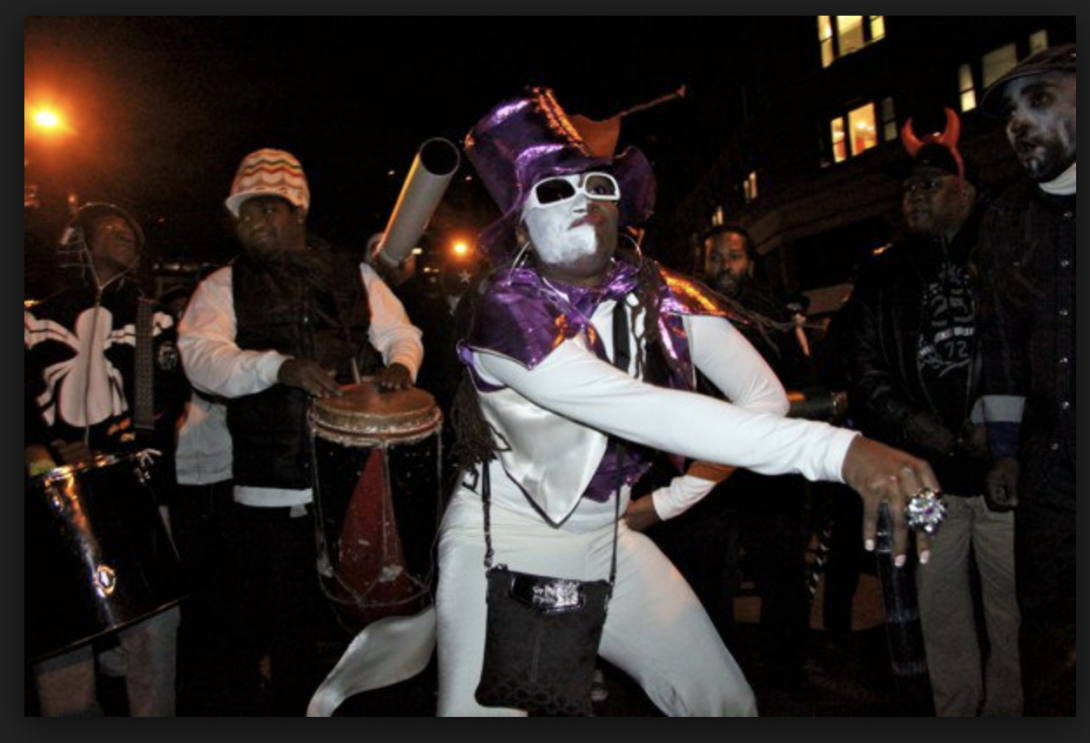Undulations
Amanda McDonald, Shanese Randall, Nadine Toussaint
Undulations are defined, by the Merriam-Webster dictionary, to be "a rising and falling in waves or a wave-like motion to and fro in a fluid or elastic medium," (2018). However, when looking at various African syncretic spiritual practices, one learns of the way different body parts' undulations are sacred and connected to certain deities or orishas. We also learn that undulations are associated with life regardless of what continent. Snakes, water, and respiration are just a few symbols linked to undulations. Whether the movement is geared towards fertility or refreshing one's self, undulations are seen to be connected to appreciating life in some form.
Undulations

For example, in Jambalaya: The Natural Woman’s Book, Luisah Teish speaks about Yemaya-Olokun, the Mother of the Sea and the Womb of Creation and one of the Seven African Powers, who is worshiped within the Middle East by belly dances because they involve an undulation to wave like movement that tribute her power (118). This worship is associated with requesting healing, resolution with life’s troubles or help with fertility. Nigeria, the Ogun River, and Brazil are all overseen by Yemaya. However, when you transition to Haitian Vodou, some dances are not always named for the divinities, according to Yvonne Daniel’s Dancing Wisdom, (111). They are geared more towards a belief system or specific worship. Therefore, the Yanvalou, for example, means “I beg of you” and can reference the servant of Papa Dambala or even the snake of Fon worship.
This form of worship requires the undulation of the back and resembles the inhalation and exhalation of breathing. For Papa Dambala, worship, specifically, the whole-body undulation speaks to the snake, which symbolizes “ongoing and profound life,” because it is located at the top of trees and eats eggs (Daniel, 77). Regardless of what deity these undulations are worshiping, these movements call upon the appreciation or acknowledgment of life. Sometimes, they even make requests for changes within someone’s life. Lower body undulations are also connected to life.
Undulations
There are various dances that involve undulations, specifically undulations of the lower body, that can be used to channel divine energy. For example, the gouyad is a dance performed during Haitian Vodou ceremonies. The gouyad is a sexually suggestive dance that involves whining and undulating of the hips. When this dance is performed, the Iwa or spirit mounts the individual performing. Once the spirit has arrived, there is a connection between death and new life.
Countless dances across the African diaspora tend to share a common thread. The Batuque is a historical dance expression amongst Afro-Brazilians. The dance involved men and women undulating their hips and pressing their navels together, which is commonly known as Umbigada. At a certain point, Black people in Brazil were prohibited from practicing this form of dance due to its perceived overly sensual nature. The Catholic church condemned the dance by linking it to prostitution. In reality, the Batuque is a ritual dance of fertility and procreation. Western sensibilities view the flowing movements of body parts as pornographic with little consideration of their divine roots. This notion is also prevalent amongst Black Americans and some of the dances they practice today.
Undulations
Modern forms of undulations can be seen in various genres of dance such as hip-hop, contemporary, ballet and etc. More specifically in hip-hop, undulations are in the techniques of twerking and juking. These forms of dance utilizes the movement of the lower body by using isolation techniques of your hips, legs and behind in a wave like and percussive form. Hip-hop has cultivated a modern twist on undulations by creating a wave of undulation anthems. Songs such as “Back that Azz up” by Juvenile, “Bounce and Break your Back” by DJ Spinn Juke City and “Pop, Lock, and Drop it” by Huey have regarded themselves as anthems in the United States’ Black communities. Given pervasive misconceptions about the foundations of highly kinetic African diaspora dances, it’s no coincidence that these new Black American dance forms lean on the pornographic as their primary focus. Twerking is defined as a “dance to popular music in a sexually provocative manner involving the thrusting of hip movements and low squatting stance” (Merriam Webster). While some aspects of the definition may be correct (stance and hip thrusting), it does not identify the historical, social and cultural intelligence animating the movements.
Undulations
On the other hand, many people who twerk and juke might not know where their dances began. Causing this amnesia is a historical divide that stems from religious and cultural difference amongst Black communities. Members of the Haitian community who practice Vodou, have taught allies about the cultural and religious significance of gouyad. So do members of the Batuque community with Umbigada. Yet more work needs to be done to share their knowledge to outsiders.
Undulations have proven to be a mode of unity, inclusivity and cultural progression over time. With its vast history and modern undertaking, it will continue to evolve in many communities.